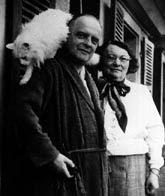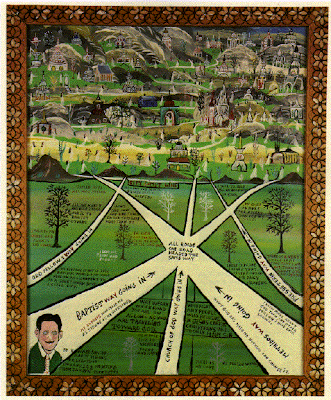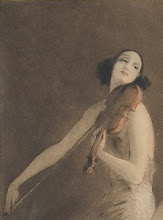
In her book America's Great Illustrators, Susan E. Meyer described the Gibson Girl the best way:
"She was taller than the other women currently seen in the pages of magazines.. infinitely more spirited and independent, yet altogether feminine. She appeared in a stiff shirtwaist, her soft hair piled into a chignon, topped by a big plumed hat. Her flowing skirt was hiked up in back with just a hint of a bustle. She was poised and patrician. Though always well bred, there often lurked a flash of mischief in her eyes."

Charles Gibson was born into a wealthy New England family. Recognizing his artistic talent his parents enrolled him in the Art Students League. At the age of 18 Charles started his career with a new magazine then Life.
Gibson'd audience enjoyed the manner in which he poked fun at high society characters. His monthly salary started at $33, the third month he was paid already $185. Tid-Bits, which was later re-named Time magazine, also bought his illustrations. Later Gibson waorked also for Scribner’s Magazine, Century, and Harper’s Magazine.
He started drawing ‘The Gibson Girl’ in 1890. His wife, Irene Langhorne Gibson, was the model for ‘The Gibson Girl’- she was an ideal image of youthful American femininity, the modern woman, athletic, smart, stylish, and desirable and she sold magazines.
Condé Nast agreed to a sharing relationship with Life, for a contract for $100,000 for 100 illustrations over a four-year period. At the height of his career, his salary had reached $75,000 per year.
By 1920 Gibson had the controlling shares of Life magazine, although he sold it in 1932. Gibson suffered a heart attack on his island off the coast of Maine, by the request of president Franklin D. Roosevelt, Gibson was flown via Navy seaplane to New York, where he died a few weeks later.



















